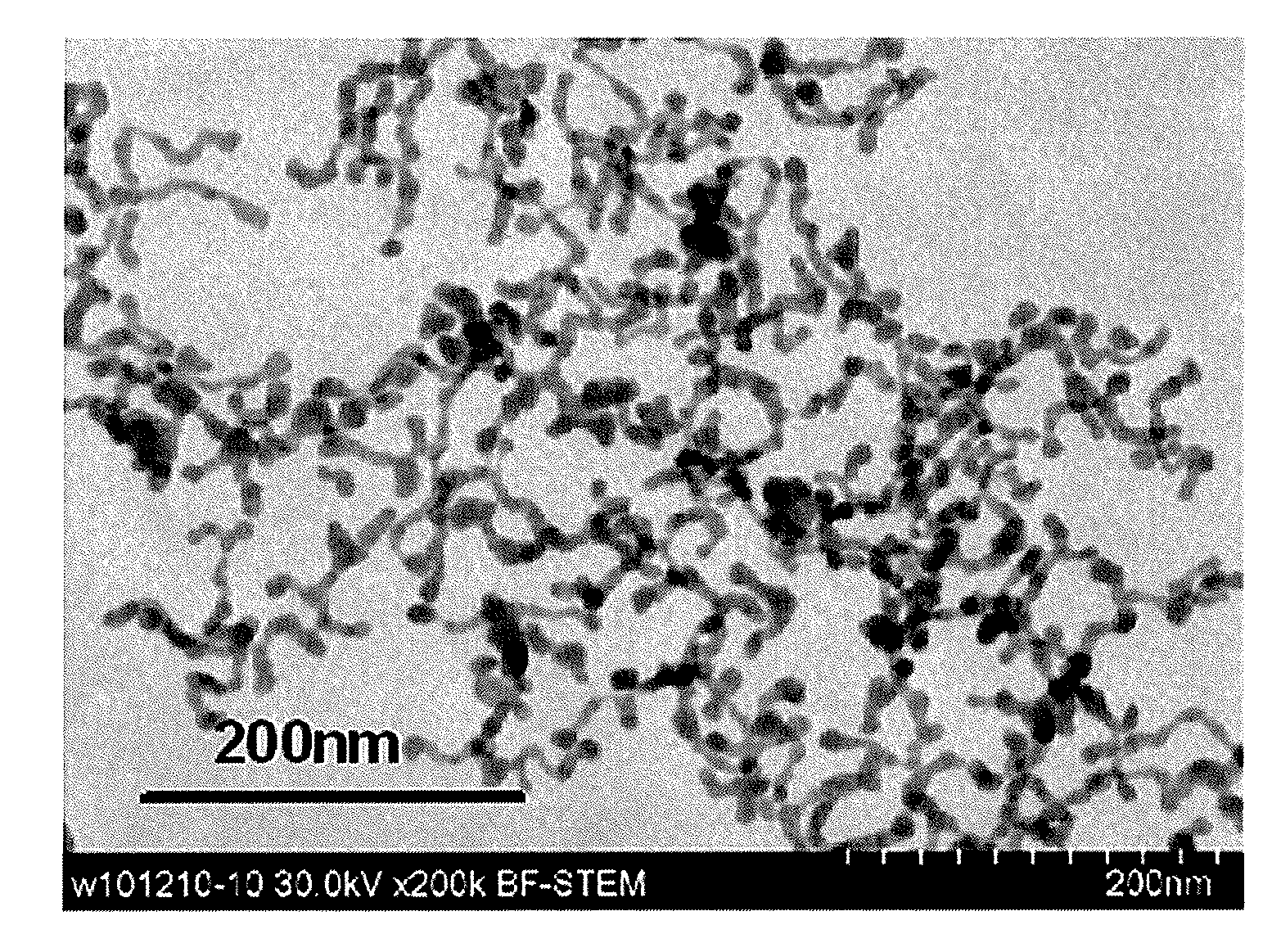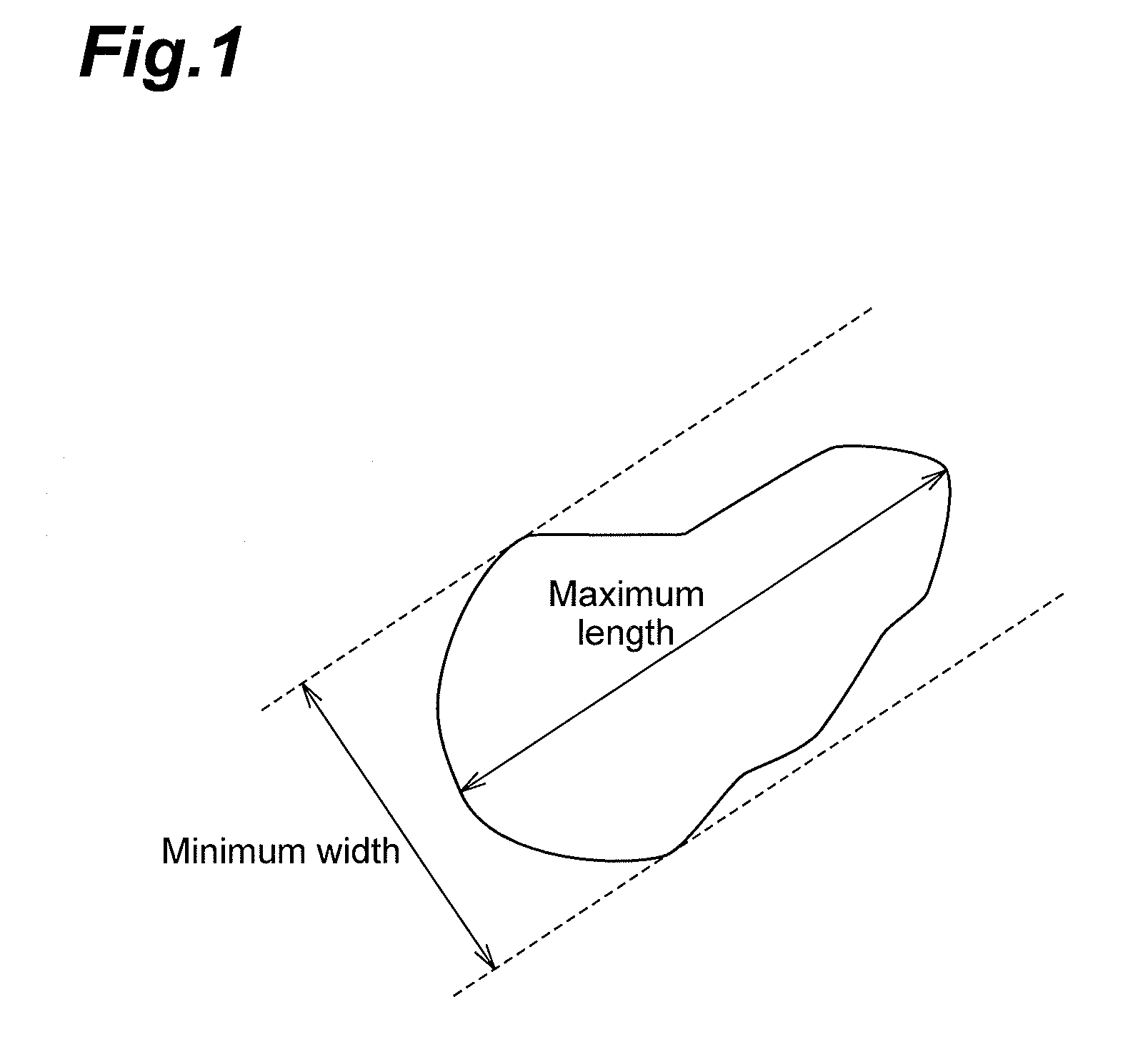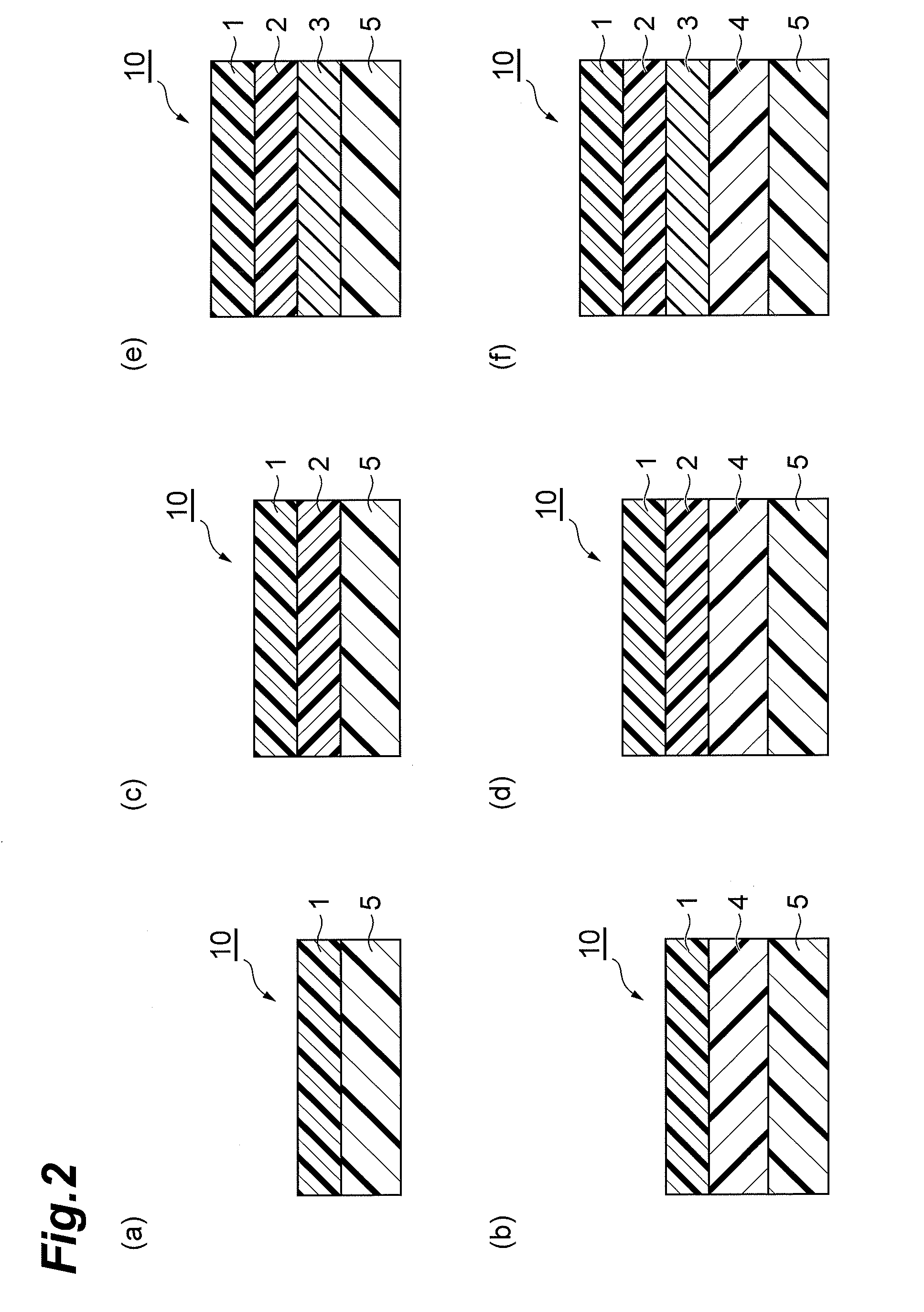Coating Material Containing Organic/Inorganic Composite, Organic/Inorganic Composite Film and Antireflection Member
a technology of organic/inorganic composite and composite film, which is applied in the direction of macromolecular organic compound pigmentation treatment, pigmenting treatment, etc., can solve the problems of limited control range, low production efficiency of formation method by vapor phase method, and unsuitable mass production, etc., to achieve easy control of organic-inorganic refractive index and good appearan
- Summary
- Abstract
- Description
- Claims
- Application Information
AI Technical Summary
Benefits of technology
Problems solved by technology
Method used
Image
Examples
example 1
20 nm SiO2-g-p(TFEMA-co-PFPMA); Thermoplastic
[0691]An organic-inorganic composite A was produced according to the mix proportion of Table 1 in the following procedure. A concentration of each component is a numerical value with reference to a total amount of all components. An evaluation result of the obtained organic-inorganic composite A is shown in Table 6.
[0692](1) CuBr and CuBr2 were added to a Schlenk flask having a rotor put therein, and an operation of vacuum-treating the inside of the flask and then performing nitrogen substitution was repeated three times to deoxygenate the inside of the flask. Then, a small amount of MIBK was introduced under nitrogen and stirring was performed.
[0693](2) PMDETA was added to the solution and stirring was performed at 60° C. A resultant solution was used as a catalyst solution.
[0694](3) BPS reformed 20 nm silica particles were put into another Schlenk flask connected with a cooling pipe and having a rotor put therein.
[0695](4) A cooling pip...
example 2
50 nm SiO2-g-p(TFEMA / MMA / EA); Thermoplastic
[0716]An organic-inorganic composite B was produced according to the mix proportion of Table 1 according to the same method as in Example 1 except that a polymerization reaction condition was 75° C. and 12 hours, and evaluated. Evaluation results of the obtained organic-inorganic composite B are shown in Table 6. Since chlorine was not detected, bromine content is shown as the halogen content.
[0717]The number average molecular weight (Mn) and the weight average molecular weight (Mw) of the polymer constituting the organic-inorganic composite B were measured according to the above-described method. It was found that Mn=14,200, Mw=21,900 and Mw / Mn=1.54 and a polymer chain with a matched chain length was bonded to the inorganic oxide particles.
[0718]Using the organic-inorganic composite B, a coating material and an organic-inorganic composite film (coating film) were obtained according to the above-described method with the solvent being chang...
example 3
50 nm hollow SiO2-g-p(TFEMA-co-HEMA); Thermoplastic
[0719]An organic-inorganic composite C was produced according to the mix proportion of Table 1 according to the same method as in Example 1 except that polymerization reaction conditions were 60° C. and 20 minutes, and evaluated. Evaluation results of the obtained organic-inorganic composite C are shown in Table 6. Since chlorine was not detected, bromine content is shown as the halogen content.
[0720]Fabrication was performed using a solvent in which MIBK and MEK were mixed at 1:1 (volume ratio) and using the organic-inorganic composite C according to the above-described method to obtain a coating material. In this case, ultrasonic treatment was performed for 3 hours. Further, a coating film was fabricated according to the above-described method. Evaluation results are shown in Table 9.
[0721]The appearance thereof was visually confirmed. The aggregation of the particles was not seen and transparency was maintained. Further, a refrac...
PUM
| Property | Measurement | Unit |
|---|---|---|
| molecular weight distribution | aaaaa | aaaaa |
| refractive index | aaaaa | aaaaa |
| refractive index | aaaaa | aaaaa |
Abstract
Description
Claims
Application Information
 Login to View More
Login to View More - R&D
- Intellectual Property
- Life Sciences
- Materials
- Tech Scout
- Unparalleled Data Quality
- Higher Quality Content
- 60% Fewer Hallucinations
Browse by: Latest US Patents, China's latest patents, Technical Efficacy Thesaurus, Application Domain, Technology Topic, Popular Technical Reports.
© 2025 PatSnap. All rights reserved.Legal|Privacy policy|Modern Slavery Act Transparency Statement|Sitemap|About US| Contact US: help@patsnap.com



